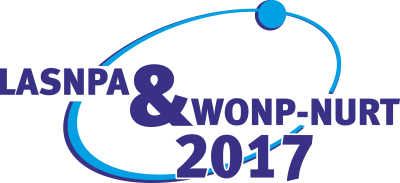Speaker
Description
The “Radioactive Ion Beams in Brasil” (RIBRAS) facility is the first device in the Southern Hemisphere to produce unstable secondary beams. It is in operation since 2004 and it consists of two super-conducting solenoids of maximum magnetic field B = 6.5T, coupled to the 8UD-Pelletron tandem Accelerator installed at the University of São Paulo Physics Institute. The radioactive ions produced by in-flight transfer reactions of stable projectiles, are selected and focalized by the solenoids into a scattering chamber. Low energy (3-5 MeV/u) radioactive beams
of $^6$He, $^8$Li, $^{7,10}$Be, $^{8,12}$B are produced currently and used to study elastic, inelastic, and transfer reactions on a variety of light, medium mass and heavy secondary targets. The 2n halo $^6$He and the 1p halo $^8$B are particularly interesting to study the role of the halo on the elastic and total reaction cross sections.
Since 2012 RIBRAS can produce purified beams, using both solenoids with a degrader between them. The use of purified beams opens new possibilities, as the resonance scattering studies using inverse kinematics, examples are the (p,p), (p,d), and (p,α) reactions using an $^8$Li beam hitting thick CH 2 targets to measure their excitation functions. The spectroscopy of the highly excited states of $^9$Be were studied in this way.
Fusion reactions are also possible with purified beams, we are programming to measure the fusion cross section by activation and off-line gamma-spectroscopy, and also by on-line particle-gamma coincidence. The interest is to study the influence of the 2n-halo structure of $^6$He on the fusion process. Our Cuban colleague Ivan Padron who spent a year in Sao Paulo put a large (2mx2m) position sensitive neutron detector, also called neutron wall, in operating conditions.
It can be used to measure break-up processes of neutron rich radioactive beams hitting a secondary target.
The installation of RIBRAS has opened many new possibilities to our Pelletron laboratory even approaching the frontiers of nuclear physics, demonstrated by the large number of publications and participations in international conferences.
